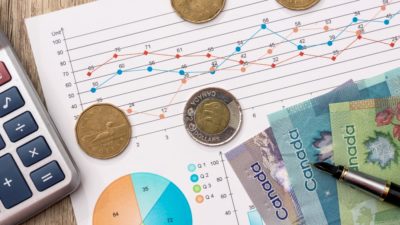I once had a long chat with David Chilton, author of The Wealthy Barber, about the many portfolios readers have sent him over the years. Some of them would have been chock-full of DSC mutual funds, others would be eclectic collections of individual stocks picked either by the client at a discount brokerage or an equally eclectic mix of stocks chosen with the help of a full-service broker. These days, many would probably hold exchange-traded funds (ETFs) instead of mutual funds.
Invariably, Chilton told me, the portfolios that had done the best over the long haul were of individual blue-chip Canadian stocks bought a long time ago and never sold. More often than not, they simply reinvested the dividends into more of the same stock.
I was reminded of this conversation a few weeks ago when an investor who had read one of my online pieces emailed me to remind me of the virtues of DRIPs, or dividend reinvestment plans.
Not that I needed reminding. I use DRIPs in my own portfolio, both for individual stocks and for some ETFs. They’re practically idiot-proof, automatic, and cost-effective, since you incur no trading costs when the dividends are reinvested.
Just as importantly, they take advantage of the power of compounding: doubly effective if they’re held in registered vehicles and escape tax drag on dividends and capital gains.
For example, one editor asked me to name a couple of “set-it-and-forget-it” investments that would be good for newcomers to the Tax Free Savings Account, or TFSA. Rather than settle for 1% a year in a GIC, I argued, far better to buy something like the XFN, the iShares Capped Financial Services Index ETF, which provides an annual yield of more than 3%. Bought and held over decades in a TFSA, and with dividends reinvested, I’m pretty certain that single investment would beat a GIC or any bond.
The result was a portfolio similar to that of my correspondent, who had bought equal amounts of five Canadian stocks: National Bank, Bank of Montreal, Bank of Nova Scotia, and energy plays Enbridge and Imperial Oil. “I followed some of the rules about increasing earnings over time, increasing dividend yields, etc.,” this investor told me via email. “I only picked stocks that had optional cash payments, automatic dividend reinvestment in the stock and the companies were not so big that the stock price could not move.”
An ETF like XFN does have a slightly higher cost – the Management Expense Ratio, or MER, is 0.55% — but the portfolio is considerably more diversified, including not just bank stocks but insurance companies and mutual fund companies. And, depending on the institution at which it is held, it’s certainly possible to arrange a DRIP on the units.
The only fly in the ointment, according to this reader, is that DRIP programs on individual stocks may force you to buy more units at the end of a quarter or month (depending on the stock), and there’s no control over the price at the moment of reinvestment. However, even that can work out: as with dollar-cost-averaging in general, when prices are down, you get more shares. In any case, he found, over the long run over which he planned to hold, “The dips and peaks cancel out and one finds that the total return is very good, certainly better than money market or bonds.”
If he were starting out as a young investor, this gentleman would not hesitate to use DRIPs with both RRSP and TFSAs.
I dare say those portfolios would not be exciting fodder to discuss at cocktail parties: they would look more or less the same year over year except the amounts involved would gradually rise: a slow and steady drip toward wealth, with almost negligible brokerage fees and investment management costs.
Not something an investment adviser can expect to get rich with, but certainly the basis for real wealth for the lucky client who is savvy enough to implement such a program, and self-assured enough to stick with it through every twist and turn of the markets.
Jonathan Chevreau also blogs at www.findependenceday.com and moneysense.ca. He can be reached at [email protected].







